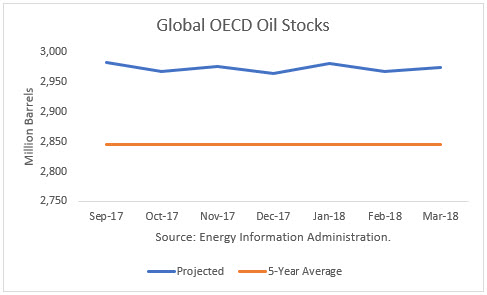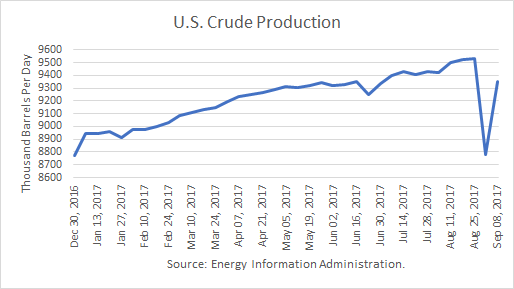
Oil futures prices have broken above the trading range where they have been since February when the market was expecting supply and demand would balance quickly as a result of the OPEC/non-OPEC deals. But those hopes were dashed because the global demand was in a seasonal decline, and inventories remained stubbornly high.
Prices managed to break higher due to a combination of circumstances:
U.S. and Global Inventories
Hurricane Harvey in the U.S. Gulf of Mexico (GOM) disrupted refinery operations, causing product stocks to draw rapidly. It was followed by Hurricane Nate, which disrupted crude oil production in the GOM.
In addition, U.S. crude exports reached record levels recently, averaging 1.744 million barrels per day (mmbd) over the past four weeks, a gain of 293 % from the same weeks a year ago. Petroleum product exports have also been strong, averaging 5.125 mmbd in the same period, up 23% v. a year ago.
Together, these trends have reduced U.S. inventories by 40 million barrels since the week ending September 8th. Global OECD stocks have dropped about 51 million barrels from May through September, though this is largely due to normal seasonal trends. Continue reading "Oil Prices Break-Out of Trading Range"


